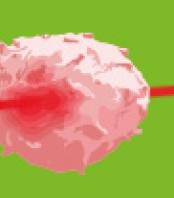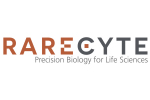3D Cell Culturing technology to grow cells so that they retain or recover their in-vivo physiological attributes

Automated microscopy and Spatial Proteomics
Real-time, label free cell analysis
Nano and micro particle analysis

Accelerate to discover
Related topics
Theranostics: From Mice to Men and Back

Jun 25, 2024
Recorded webinar
Presenters: Prof. Dr. Ken Herrmann and Prof. Dr. Katharina Lückerath – Moderator: Hannah Notebaert
Orion 2024 AACR poster: 17-plex single-step stain and imaging of cell Lung Carcinoma

Jun 21, 2024
RareCyte Orion is a benchtop, high resolution, whole slide multimodal imaging instrument. A combination of quantitative...
Hypoxia in the Tumor Immune Microenvironment (TIME)

Jun 6, 2024
Thursday, 11 July 2024, 16:00 CET | 10:00 EST
Zaver M. Bhujwalla, PhD
X-RAD 320 for irradiation therapy during quantifying study for in vivo collagen reorganization

Jun 5, 2024
Quantifying in vivo collagen reorganization during immunotherapy in murine melanoma with second harmonic generation...
Use of MRI and microCT to evaluate gene therapy for the treatment of discogenic back pain

Jun 4, 2024
MRI images were obtained using the 9.4T Bruker BioSpec system, equipped with 40 mm 1H quadrature volume resonator, and...
Exosome-Mediated Delivery of Small Molecules, RNA & DNA for Development of Novel Cancer Therapeutics

Jun 3, 2024
Disha Moholkar of University of Louisville's Gupta Lab
Tuesday, June 11, 2024, 6:30 PM...
Emulate in vivo conditions – introduce shear flow to your experiments with BioFlux system

May 27, 2024
Most research is still conducted in vitro without the presence of flow. We use the BioFlux System to give you the...
High-frequency Ultrasound System For Preclinical Imaging

May 13, 2024
The Prospect T1 is an innovative high-frequency ultrasound system designed specifically for in vivo preclinical imaging...

May 6, 2024
Glioblastoma is the most common primary brain tumor in adults [81]. Collectively, recent studies demonstrated that apoptosis in cultured glia cells, as well as inhibition of proliferation and enhanced sensitivity toward chemicals of glioblastoma cells were induced by µg [82,83]. To investigate the evident effects of µg on glioblastoma cells and how reduced gravity might alter invasion and migration potentials, Shi and colleagues subjected human glioblastoma U87 cells to s-µg using a 2D-clionostat [84]. Importantly, s-µg stimulation significantly reduced the migration and invasion potentials, decreased thapsigargin-induced store-operated calcium entry (SOCE), and downregulated the expression of ORAI1 protein in U87 cells. To further dissect the mechanism behind the observed results, inhibition of SOCE by stromal interaction molecule 1 (STIM1) or 2-aminoethoxydiphenyl borate (2-APB) was pursued. In both cases inhibition of SOCE in the U87 cells mirrored the effects of s-µg. As overexpression of ORAI1 dramatically reversed the effect of s-µg, the authors suggested that s-µg conditions inhibited the migration and inversion potentials of U87 cells by downregulating the expression of ORAI1 [84].
Get more info
Brand profile
3D Cell Culturing technology to grow cells so that they retain or recover their in-vivo physiological attributes
More info at:
https://celvivo.com/